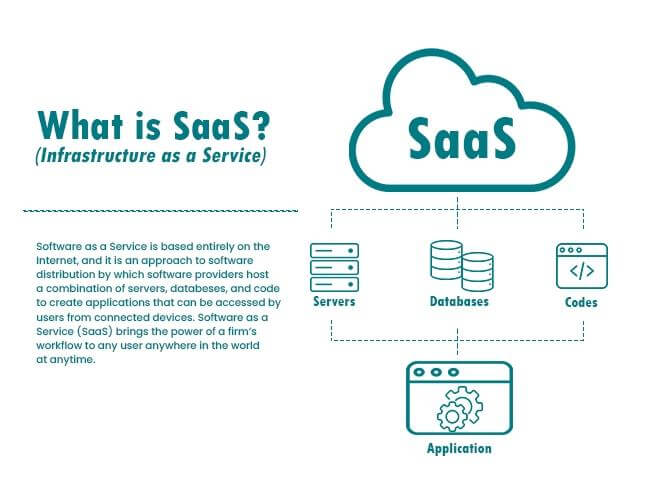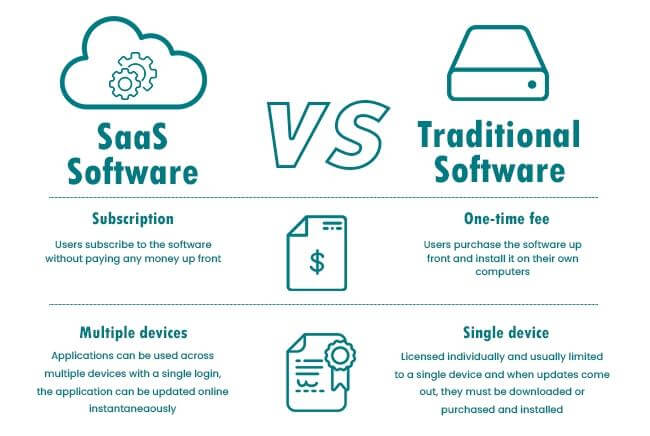What is the full form of SaaSSaaS: Software as a ServiceSaaS stands for Software as a Service. It is one of the ways to provide services over the internet, such as applications. In it, you do not suppose to install and maintain the whole software on your device, but you can access it simply through the internet. It takes the help of the internet to deliver the service. This keeps you away from critical software and hardware management. 
Web browser directly runs the majority of the SaaS applications and hence do not require installing from the customer end too. Known by different names such as hosted software, Web-based software, or on-demand software, they are carried on a SaaS provider's server. And it is the provider who looks after the security, availability, performance and access to the application. Also referred to as cloud application service, SaaS denotes the most often used alternative by businesses in the cloud market. Characteristics of SaaSSaaS provides its customer with protection to privacy, along with reliable and secure services on a large scale. Just, similar to a bank. The key characteristics of the SaaS model are as follows:

What are SaaS trends?SaaS integrating platforms are nowadays developed by organizations for developing additional SaaS applications. Such as Saugatuck Technology, a consulting firm calls it a third wave in the adoption of software, where the SaaS has become a platform for mission-critical applications and has moved beyond stand-alone software functionality. SaaS becomes part of one of the many solutions of cloud competing for the issues of business IT. There are other 'as a Service option, such as:
All of these services are basically charged per seat or per month as per the usage. Reducing the costs for the business by limiting it to just paying for what is required. The Benefits of SaaSMany businesses turn towards cloud-based SaaS alternatives, due to increased efficiency and effective cost. The advantages include: Lower costs for setup and infrastructure: While using SaaS, the consumer just pays for what service is taken and no other capital expenditure. Hence, over time it does not needs to be depreciated on the balance sheet. Accessibility from any location: The consumer just needs an internet connection to work from anywhere. The customer can get access through any device, such as a laptop, desktop, mobile, tablet or other networked devices. Scalability: Requirements can be set to the number of people using the system. Other essentials such as data volume and its functionality can also be adjusted as the business expands. Agreement: There will be a surety that the software will be available for use, whenever needed. Which, is a difficult assurance for any in-house team to be made. This is done through the Industry led by service level agreements (SLAs). Automatized and frequent updates: The service providers constantly keep on upgrading, as they get responses to the requirements of their customers. This will relax the business's IT department. Highest level of security as required by any customer: All the customers get benefitted from the highest security level that has been designed for those who have higher security requirements. This is needed for the shared nature of the services provided.
Next TopicFull Form
|
 For Videos Join Our Youtube Channel: Join Now
For Videos Join Our Youtube Channel: Join Now
Feedback
- Send your Feedback to [email protected]
Help Others, Please Share









